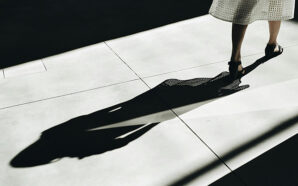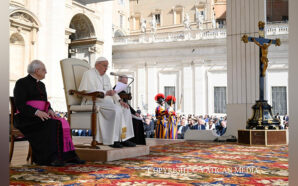On Sunday, May 29 this year at the end of the Angelus, Pope Francis announced the creation of new cardinals and set August 27 as the date for the celebration of the consistory. This is the eighth time this has happened during his pontificate. Since 2014 the pontiff has celebrated a consistory every year. The exception was 2021, perhaps because of the pandemic. Such an announcement was thus expected. The date chosen for the consistory is, in truth, unusual. But it should be noted that the pope, at the same time as the appointment of the new cardinals, also convened a meeting of all the cardinals for August 29 and 30, “to reflect on the new apostolic constitution Praedicate Evangelium” dealing with the reform of the Roman curia. Therefore the new cardinals will also participate in that meeting. It will be a very important occasion not only because of the topic dealt with, but also for the mutual knowledge and cohesion of the members of the entire college of cardinals, old and new, electors and non-electors. In fact there has not been a comparable meeting for some time.
The pope announced 21 new cardinals, of whom 16 are electors (that is, under the age of 80) and five non-electors (who, being over 80, do not have the right to participate in a conclave). One of the latter, however, requested he be excused from accepting the nomination, to which the pope assented. We will therefore have 20 new cardinals, four of whom are non-electors. This is the highest number in the consistories of Pope Francis, but it is quite normal if one thinks that every year on average at least a dozen cardinals pass the threshold of 80 years and that this consistory comes more than a year and a half after the previous one. Paul VI had directed that 120 was an appropriate maximum for the number of cardinal-electors and, even if it may be temporarily exceeded (as happened several times in the pontificate of Saint John Paul II), we see that his successors continue to follow that practice. On August 27, in fact, the cardinal-electors (barring some possible deaths) should be 132 and the non-electors 95, for a total of 227.
With this consistory, the cardinal electors created by Pope Francis will now clearly exceed half of the total: 83 out of 132. Those created by Benedict XVI drop to 38, and those created by John Paul II remain at 11.
The ratio between the continents represented in the college of cardinals continues gradually to change, especially as regards the electors. The number of Europeans is decreasing (54), now clearly less than half, while cardinals from other continents are increasingly present: from the Americas (38), Asia (20), Africa (17); the number of those from Oceania is naturally smaller (3). As regards Italy, 20 Italian electors will attend the consistory in August, but with the prospect of being reduced to 14 within a year. All this seems natural in a globalized world, in which the Church has taken root and grown in all the continents, a world in which the possibilities of travel and communication make it realistic to convene for a conclave, in a relatively short time, a college of cardinals drawn from well beyond the limits of the city of Rome, of Italy, of Europe, to which it was understandably limited in other eras.
The countries represented in the entire college of cardinals today number 90. Since Pius XII began his “internationalization,” in the famous consistory of 1946, after the end of the Second World War, it has been a long road.
Who are the new cardinals?
On the occasion of each consistory, it is right to pause and reflect briefly on the choices made by the pope and on some of the “messages” that can be drawn from them.
At the head of the list of new cardinals we find, as usual, three people who occupy posts of notable importance in the government of the Church and of the Vatican City State, with tasks that are usually entrusted to cardinals.
They are: the Prefect of the Dicastery for Divine Worship and the Discipline of the Sacraments, Englishman Arthur Roche; the Prefect of the Dicastery for the Clergy, Korean Lazarus You Heung-sik; the President of the Pontifical Commission for the Vatican City State and the Governorate of the same, Spaniard Fernando Vérgez Alzaga, who is a Legionary of Christ.
The series of archbishops and bishops engaged in pastoral care in the various parts of the world follows.
It is worth noting the large group of Asians. Alongside the Korean cardinal from the Roman curia, these include two who are pastors of the dynamic Catholic Church of the Indian subcontinent: Archbishop Felipe Neri António Sebastião do Rosário Ferrão, of Goa and Damão (ancient See of the “Patriarch of the East Indies,” an honorary title today), and Archbishop Anthony Poola, of Hyderabad.
Then the Archbishop of Singapore, William Seng Chye Goh, and that of Dili, capital of East Timor, Virgilio do Carmo da Silva, a Salesian. In both cases – both for the cosmopolitan city-state on the island at the tip of the Malay peninsula, and for the small former Portuguese colony with a very large Catholic majority, which has courageously defended its independence – this is the first cardinal from these respective localities.
The youngest of the new cardinals, Giorgio Marengo, 47 years old, could also be considered Asian: he is Italian, a native of Cuneo and a Consolata Missionary, but today he is apostolic prefect of the capital of Mongolia, Ulaanbaatar, hence pastor of a tiny Catholic community in the center of boundless Asia, on a real frontier of evangelization.
As for the Americas, there are two Brazilian cardinals. Let us not forget that we can consider Brazilian Catholics the largest national group, and their episcopate the most numerous in the world. The archbishops of the capital of Amazonia, Manaus, Leonardo Ulrich Steiner, a Franciscan, and of the capital of the country, Brasilia, Paulo Cezar Costa, became cardinals. As we know, the Amazon, to which a special synod was dedicated, is the object of the attention and concern of the pope and the universal Church, and Archbishop Steiner has courageously taken critical positions against government policy.
In Latin America the Archbishop of Asunción, Adalberto Martínez Flores, also became cardinal, giving Paraguay its own presence in the college of cardinals. With regard to the United States, Pope Francis has chosen Bishop Robert McElroy of San Diego. In an episcopate where there is no lack of discussion, this is a person who has taken clear positions, for example on poverty and immigration, for which the pope evidently wanted to show his appreciation.
The two African appointments are also significant. The pope in 2018 had reluctantly accepted the resignation of Nigerian Bishop Peter Okpaleke, who for ethnic reasons had not been accepted by the clergy of the diocese of Ahiara, then entrusted to him. By naming him now a cardinal, Pope Francis is sending a very clear message against all forms of tribalism, in society and even more so in the Church. The other new cardinal is the current Bishop of Wa, Ghana, Richard Baawobr, who in 2010 was the first African to be elected superior general of the Missionaries of Africa, known as the “White Fathers.”
Let us come finally to Europe. In addition to the two already mentioned “Roman” cardinals, we have the Archbishop of Marseilles, Jean-Marc Aveline, a leading figure in the French episcopate, born in Algeria, but living in Marseilles since the age of 7. He is at the forefront of inter-religious dialogue as well as involved with the pastoral and social problems of the great Mediterranean city. Italy is represented by Oscar Cantoni, former bishop of Crema and now bishop of Como, a diocese where the generous Christian commitment to the poorest was highlighted by the murder in 2020 of Don Roberto Malgesini. He was killed by one of the people he was assisting.[1] One cannot fail to notice the freedom with which Pope Francis moves in his appointments, without limiting himself to the sees traditionally associated with cardinals. This is certainly true for Italy, but elsewhere too.
This consistory will once again give us some new “non-elector” cardinals, who have recently turned 80.
The Archbishop Emeritus of Cartagena, the Colombian Jorge Enrique Jiménez Carvajal, a religious of the Congregation of Jesus and Mary, is an important figure in the Church of Latin America, having been Secretary of the CLAR (Latin American Conference of Religious) and Secretary General and then President of CELAM (Latin American Episcopal Council). The archbishop emeritus of Cagliari, Arrigo Miglio, formerly bishop of Iglesias and then of Ivrea (his diocese of origin, where he was for a long time the vicar general of Luigi Bettazzi), a biblical scholar, he was assistant general of the Agesci scouts and president of the Committee for the Social Weeks of Italian Catholics; finally he performed a valued service as apostolic visitor to the Abbey of Saint Paul Outside-the-Walls.
Two Italian priests who are not bishops complete the list. Father Gianfranco Ghirlanda, Jesuit, distinguished canonist, professor at the Gregorian University, has been for decades consultant to numerous Vatican Dicasteries and has carried out delicate tasks with vigilance, involving the reform of religious Institutes, among which was the Legionaries of Christ. He also played a role in the preparation of the new apostolic constitution on the Roman curia, Praedicate Evangelium, which will be dealt with at the meeting of the cardinals in August. He is the fifth former rector of the Gregorian University created cardinal in recent times, after his predecessors Dezza, Muñoz Vega, Martini and Navarrete. For his part, Monsignor Fortunato Frezza, biblical scholar and esteemed spiritual counselor, now a canon of St. Peter’s, has worked generously, competently and discreetly for over 30 years in the Secretariat of the Synod of Bishops, a crucial body for the exercise of episcopal collegiality and the development of synodality in the life of the Church.
The Belgian Lucas Van Looy, a Salesian, declined the appointment. He had been a missionary in Korea and had held positions of great responsibility in the government of his religious congregation, before being nominated bishop of Ghent in 2003. A statement by the Belgian Bishops’ Conference on June 16 made it known that “Bishop Van Looy had asked Pope Francis to dispense him from accepting the nomination as cardinal and that the pope had granted the request.” The reason was that “the announcement of his creation as cardinal had elicited many positive reactions, but also criticism that he had not always reacted with sufficient energy, as bishop of Ghent, against abuse.” Bishop Van Looy therefore wanted to prevent the victims from suffering further.
Such a renunciation had not taken place until now. However, it should not come as too much of a surprise. Pope Francis, since the beginning of his pontificate, has consciously chosen to announce the new cardinal appointments after prolonged personal reflection, carried out for good reasons in total confidentiality, avoiding even a prior consultation with those being considered. The latter in fact were often taken completely by surprise. In so doing, he himself had taken into account the possibility of a renunciation should justified reasons arise on the part of those concerned, which he had not been able to take into account beforehand. This is what happened in this particular case, which highlights the care and sensitivity of both Bishop Van Looy and Pope Francis in avoiding the further suffering of victims of abuse.
At the service of a universal and missionary Church
Among the many other observations that could be made about the new cardinal nominations, the ample representation of various religious orders and congregations is worth noting: a Salesian, a Friar Minor, a Jesuit, a Legionary of Christ, a Missionary of Africa, a Consolata Missionary, a religious of the Congregation of Jesus and Mary (Eudists).
In conclusion, the August consistory will result in a college of cardinals that increasingly reflects the universal presence of the Catholic Church and also the marked evolution of its distribution in the different continents and countries. A missionary Church attentive to the different “peripheries”: geographical, cultural, social. A Church rich in pastoral experiences and great spiritual traditions. A Church that also experiences situations of tension, both internally and in relation to the societies in which it operates.
If the cardinals are to be closely united with the pope and with each other in the service of witness to the faith and the unity of the ecclesial community, it is to be hoped that the forthcoming meeting at the end of August will be a great experience of communion, to encourage and foster effective witness to the unity of the Church “in Christ as sacrament, that is, sign and instrument of intimate union with God and of the unity of the whole human race” (Vatican Council II, Lumen Gentium, No. 1).
We must not forget that the red of the cardinals’ robes is not designed to attract the attention of photographers, but reminds us that they must be ready to witness even at the cost of the effusion of blood. We will accompany in prayer the new and the old cardinals in their lives of demanding service.
Federico Lombardi, SJ is the Emeritus editor of La Civiltà Cattolica.
Reproduced with permission from La Civiltà Cattolica and Federico Lombardi SJ.
DOI: La Civiltà Cattolica, En. Ed. Vol. 6, no.8 art. 7, 0822: 10.32009/22072446.0822.7
[1]. Cf. G. Pani, “Non chiamatecei ‘preti di strada’. Un ricordo di don Roberto Malgesini”, in Civ. Catt. 2020 IV 181-187.








